Review: 'Snow White'
Perhaps not the fairest of them all, but among Disney’s live-action remakes, it's still high up on the list.
Snow White. Now that’s a name that should conjure up childhood nostalgia, summoning memories of Christmas mornings in front of the TV, watching Disney’s cavalcade of classics, From All of Us to All of You.
That song… you can hear it now, can’t you? The Dwarfs singing and dancing, that bee, the wooden pipe organ, all the animals, and everything ending with Sneezy’s epic sneeze, sending the smallest of them, Dopey, flying into the rafters.
Watching that show every Christmas has become a tradition here in Norway, and I’m sure many other countries around the world. And while I have to admit that most of the actual film has long since faded from memory, that song remains. Because while the childhood nostalgia is real, I never really kept up with all those Disney films that are nearly twice my age.
And reading all the lamenting and gnashing of teeth from Disney purists online about the so-called plague of live-action remakes these days, maybe that lack of strong connection to those classics gives me an advantage in reviewing this particular film. I have no outrage to see through and no political stance to push, just one question: is it good or not?
I’m sure you know the story, so I won’t spend too much time on it here. Or maybe I will. Let's see. I'm not always planning these things…
Anyway, once upon a time, there was a kind and beautiful princess named Snow White. But her jealous stepmother, the Evil Queen, wanted to be the most beautiful of all. So she ordered the assassination of the young princess.
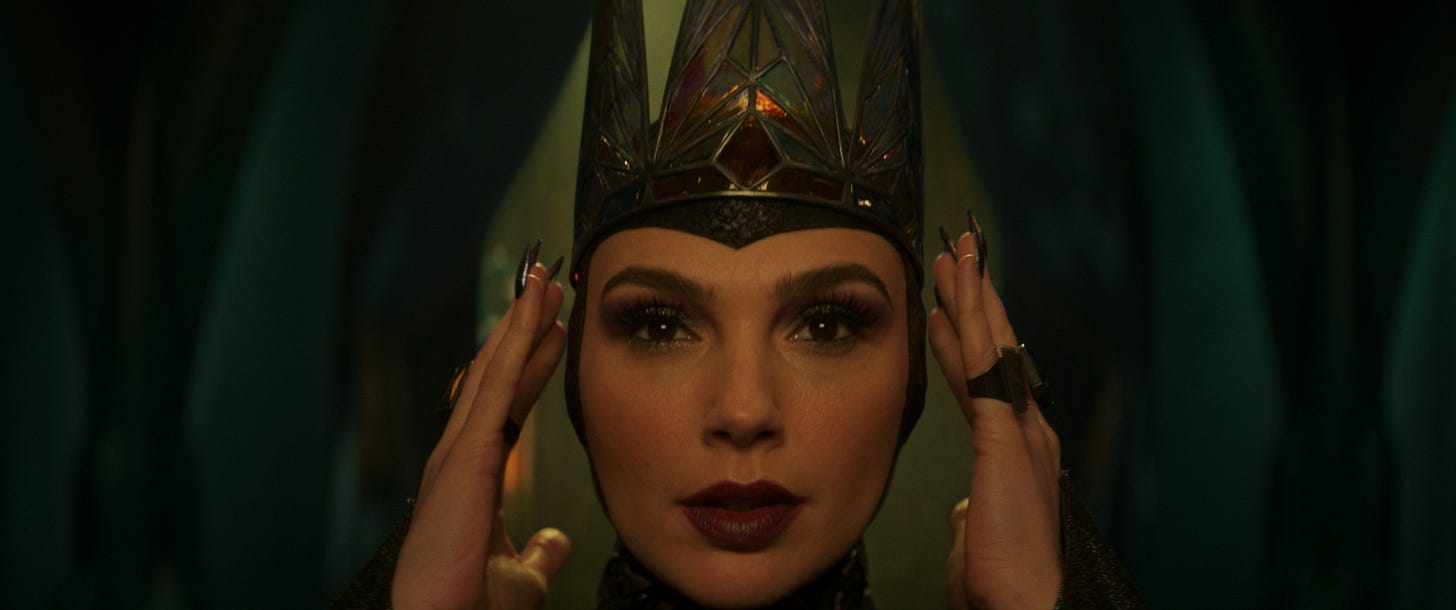
But she escapes into the forest, where she befriends seven Dwarfs—Doc, Grumpy, Happy, Sleepy, Bashful, Sneezy, and Dopey—who offer her shelter in their cottage, because apparently moving into a cottage in the woods with seven strange, bearded men is completely cool and normal in these stories.
Meanwhile, the Evil Queen, upon discovering that Snow White is still alive, disguises herself as an old hag and gives the young princess a magic apple that knocks her into a death-like sleep.
But fear not, dear readers. This is a fairy tale, and every curse needs its magical loophole. In this case: the kiss from one's true love will wake her up. Which raises an interesting question—if she’s unconscious, how can she fall in love?
In the end, a handsome prince—whom she conveniently fell for at the beginning of the story—finds her sleeping and kisses her, waking her from the spell. And because all this runs on fairy tale logic, she immediately decides to run off with him to live happily ever after, much to the annoyance of the Evil Queen.
Cute.
Well, that's Walt Disney's version. Like other Disney classics, Snow White is based on a story by two slightly disturbed German gentlemen named the Grimm brothers. This was the early 19th century, and in their version, the Evil Queen wants Snow White—in some early versions depicted as just 7 years old—dead. Very dead. And she wants to eat her lungs and liver. Lovely.
The handsome prince? Also creepy, especially considering the version where the young princess is just a child. He doesn’t kiss Snow White awake, though; he just wants to keep her lifeless body on display—because, you see, she’s just that beautiful. She only wakes up when his servants accidentally drop the coffin, dislodging a piece of poisoned apple from her throat. Naturally, she immediately falls in love with the creepy prince. Romantic.
As for the Evil Queen, she gets what’s coming to her, in the most medieval way possible. She’s forced to dance at Snow White’s wedding in red-hot iron shoes until she drops dead.
Cool and normal.
And now we have yet another version, this time directly based on Disney’s animated classic. Simply titled Snow White, this latest take on the beloved 1937 film joins the ever-growing lineup of live-action updates—some good, others... less so.
With each new adaptation, Disney has to convince older generations that these remakes are worth it for nostalgia’s sake, while also appealing to a younger audience who sees 1930s 2D animation as downright prehistoric.
In this version, Snow White is portrayed by actress and singer Rachel Zegler, a fact that has infuriated many for various reasons: racism, misogyny, toxic fandom, wrong hair color, wrong political views, all of the above, take your pick.
Playing opposite her is Gal Gadot, who has also become controversial, largely due to her political views, which seem to be diametrically opposed to Zegler’s, especially regarding the Middle East — something that, if rumors are true, didn’t exactly help the already troubled production.
Add production problems, clumsy marketing, and restricting critics from previews, and well, it seems we're only scraping the surface of a film that has become something of a target for all kinds of criticism.
Oh well, seems we just can't have nice things, can we?
But enough with all that—is it any good?
Surprisingly, with all that baggage, it’s still pretty good. It gets a lot right, even if it stumbles over its own storytelling and fairy tale logic a couple of times. There are issues here and there—and I’m not talking about the controversies surrounding the film. Still, it’s a good movie, perhaps one of the better ones in Disney’s lineup of live-action remakes, though not without its flaws. I’ll get to those soon.
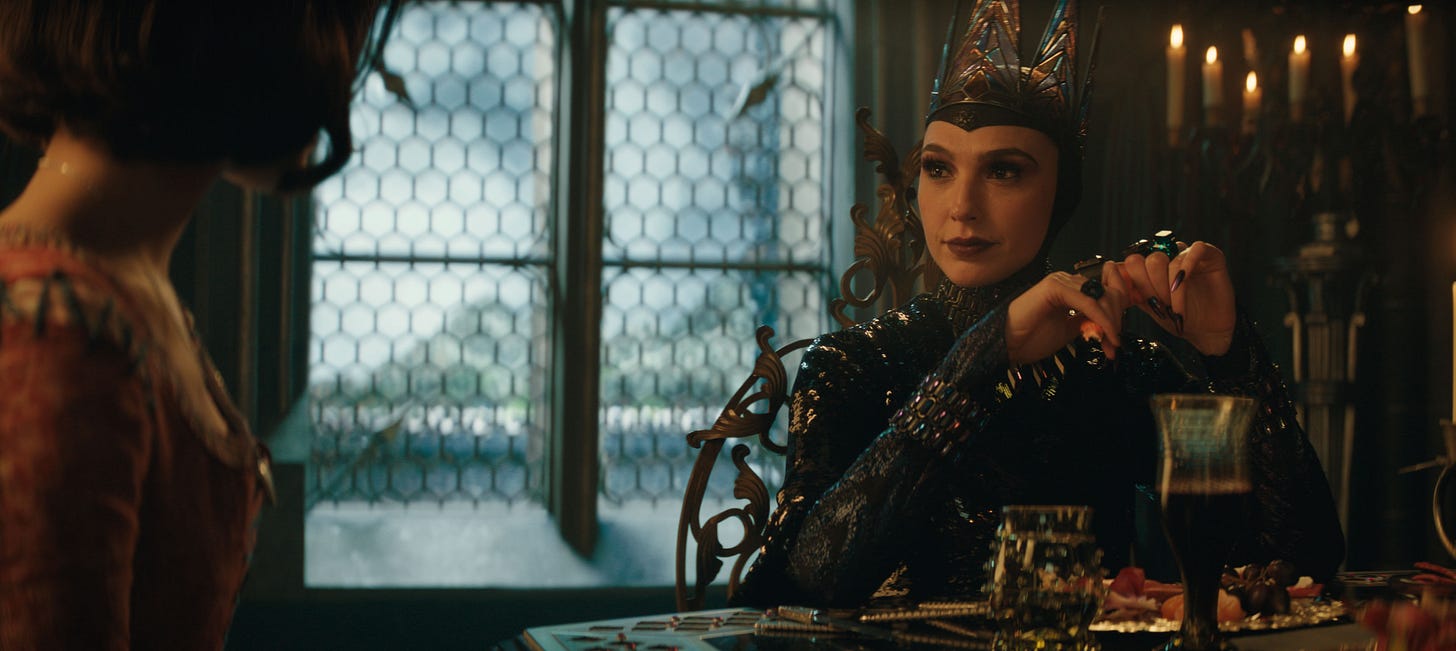
The story is mostly the same as the Disney animated classic, although the focus shifts firmly to Snow White’s journey. Instead of being the mostly passive and naive character she is in the older version—very much a product of its time—she is now strong-willed and proactive, not a "damsel in distress."
Just as the original reflected its era, this one reflects ours, shaped by the conversations, values, and expectations of today. Changes like these aren’t always a good thing in remakes, but in this case, it’s a clear improvement from Disney’s original.
Zegler is, perhaps to the surprise and chagrin of many naysayers online, one of the film’s biggest draws. She’s excellent in the role, portraying Snow White as sweet and innocent but also stubborn and funny. And that singing voice!
Gal Gadot is… well, she’s Gal Gadot. Stunningly beautiful, with a sinister edge that fits the role perfectly. She clearly channels classic Disney villains, playing evil and cruel—though always within the acceptable limits for young children, of course. But perhaps we could have done without the singing in this case?
One of the bigger changes is that the creepy prince is unceremoniously booted from the story—good riddance. Taking his place as Snow White’s love interest (and frequent duet partner) is Jonathan (played by Andrew Burnap), a Robin Hood-esque leader of bandits who was driven out by the Evil Queen. Now, he leads a merry band of outlaws fighting for the old and missing King.
The story of Snow White wouldn't be complete without the Seven Dwarfs, and, like just about every other part of this production, they come with their fair share of controversy.
For the Dwarfs, Disney chose to use CGI, despite objections from the dwarfism community, including actor Peter Dinklage, and the result is very hit-and-miss. Well, mostly miss, to be honest.
For the most part, good CGI isn't about throwing as much money and tech at the problem as possible, but about understanding filmmaking, lighting, and design.
That’s why CGI characters like Gollum from Peter Jackson's The Lord of the Rings trilogy and later The Hobbit trilogy still stand as crowning achievements decades after their release. The technology used to create them has long since been updated by pioneers like James Cameron and others who truly understand how to bring memorable CGI characters to life.
The Dwarfs in Snow White are anything but memorable—in fact, they’re downright creepy! They look as if they were lifted straight from the animated classic and given a thin, photorealistic skin. The result places them deep in the so-called uncanny valley, making them unsettling to watch.
That said, the blow to the senses is slightly lessened by the thoroughly fairy tale-ish tone of the film. But the screen still screams “This is CGI!” every time a Dwarf appears.
Your mileage may vary, but to me, these CGI characters—so integral to the story—felt more artificial and cartoonish than anything else. Why Disney didn’t use real actors in prosthetics, supported by forced perspective like The Lord of the Rings, or a number of other, more believable methods, is baffling.
And then, there's the singing. Of course, a Disney film like Snow White wouldn't be the same without it, from the Dwarfs chorus of "Heigh-Ho!" ringing out through the gem-filled caves and forest to Snow White's song of teaching the Dwarfs to wash and clean. We even have Gal Gadot's mustache-twirling (figuratively speaking, of course) villainous anthem, "All is Fair", with all the expected melodrama and sinister glee. And of course, the yodeling "Silly Song", of From All of Us to All of You fame, sneezing and all, although cut down a bit from the animated version.
All in all, Snow White is much what you'd expect from a live-action Disney remake. It's clean, synthetic, and pastel, and far from the horror show that many naysayers would have you believe—even before they watched it. In fact, it might just be one of the better live-action remakes of Disney classics to date, but depending on who you ask, that’s not exactly a high bar to reach.
So, don't overthink it like I'm doing. Because that’s what I do. I watch movies, and I overthink things. Ignore all the controversies, and just have a silly good time with this. Bring popcorn, and if you have kids, bring them too. Adults' nostalgia aside, they are the ones this film is made for.

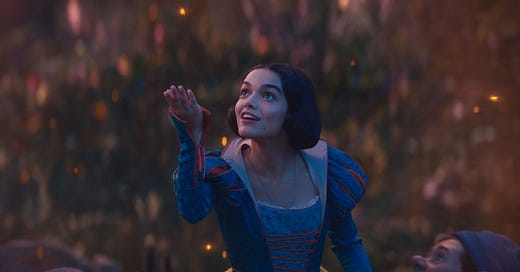



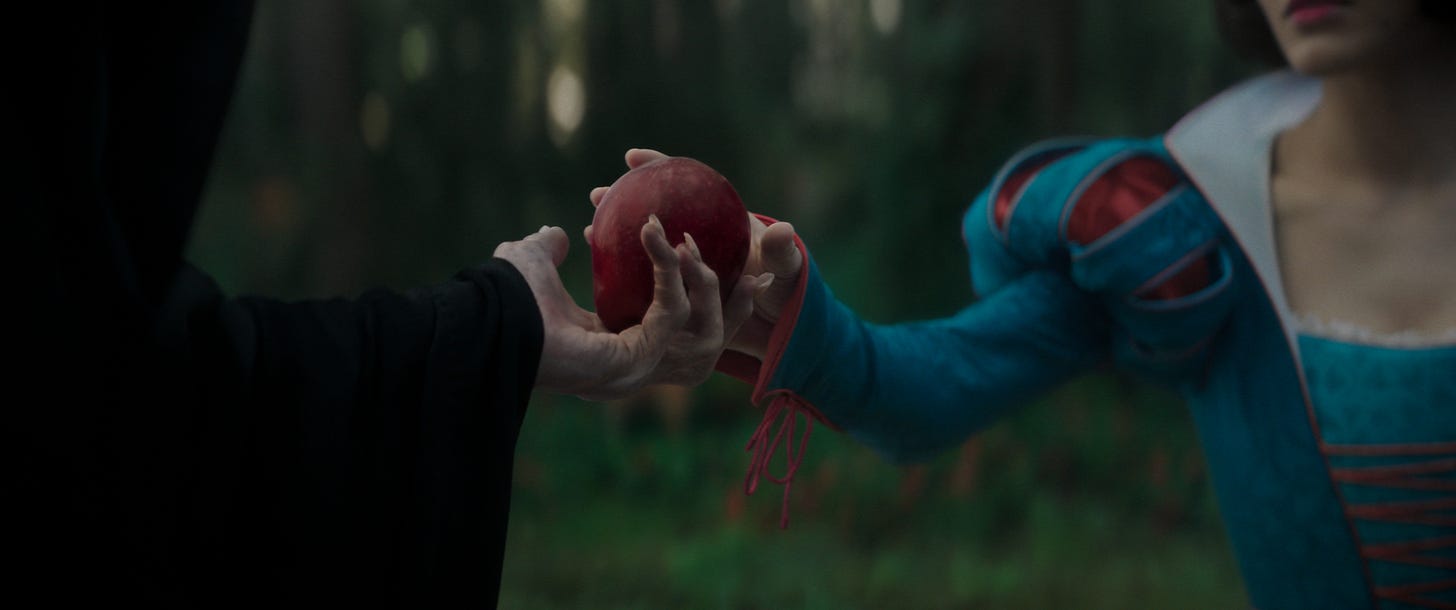
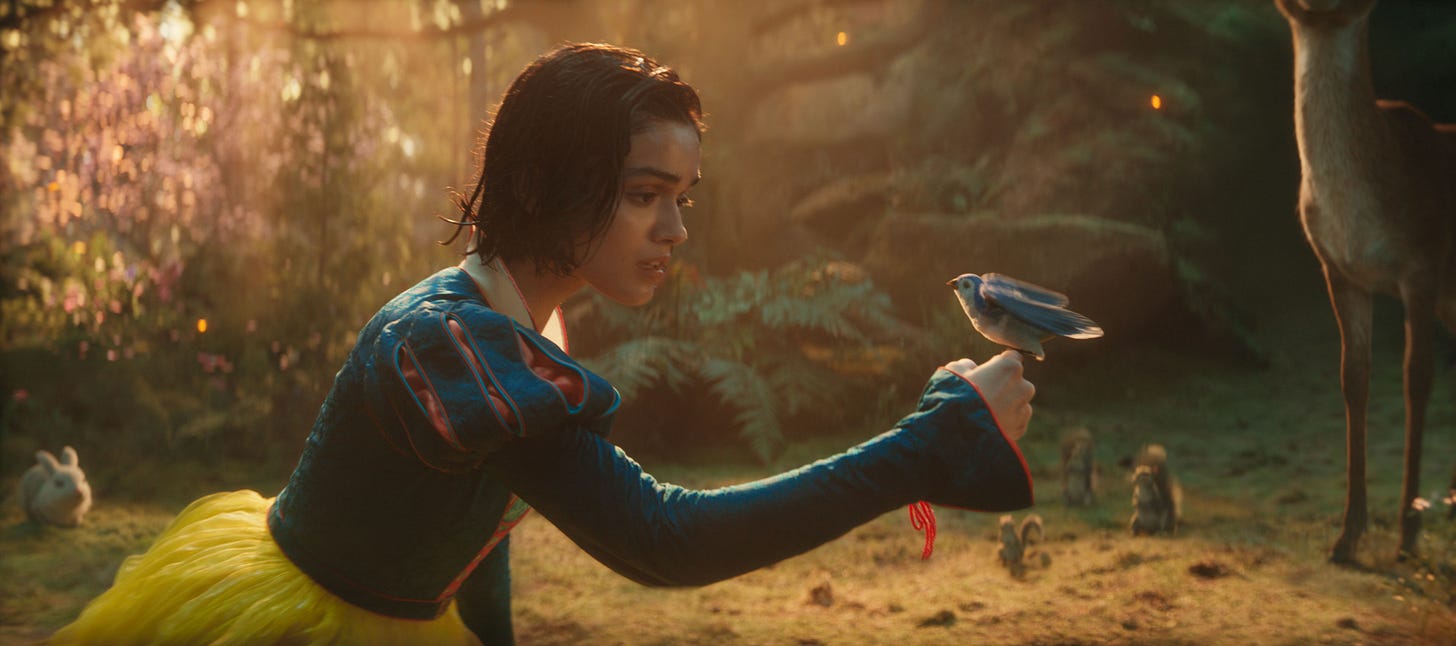
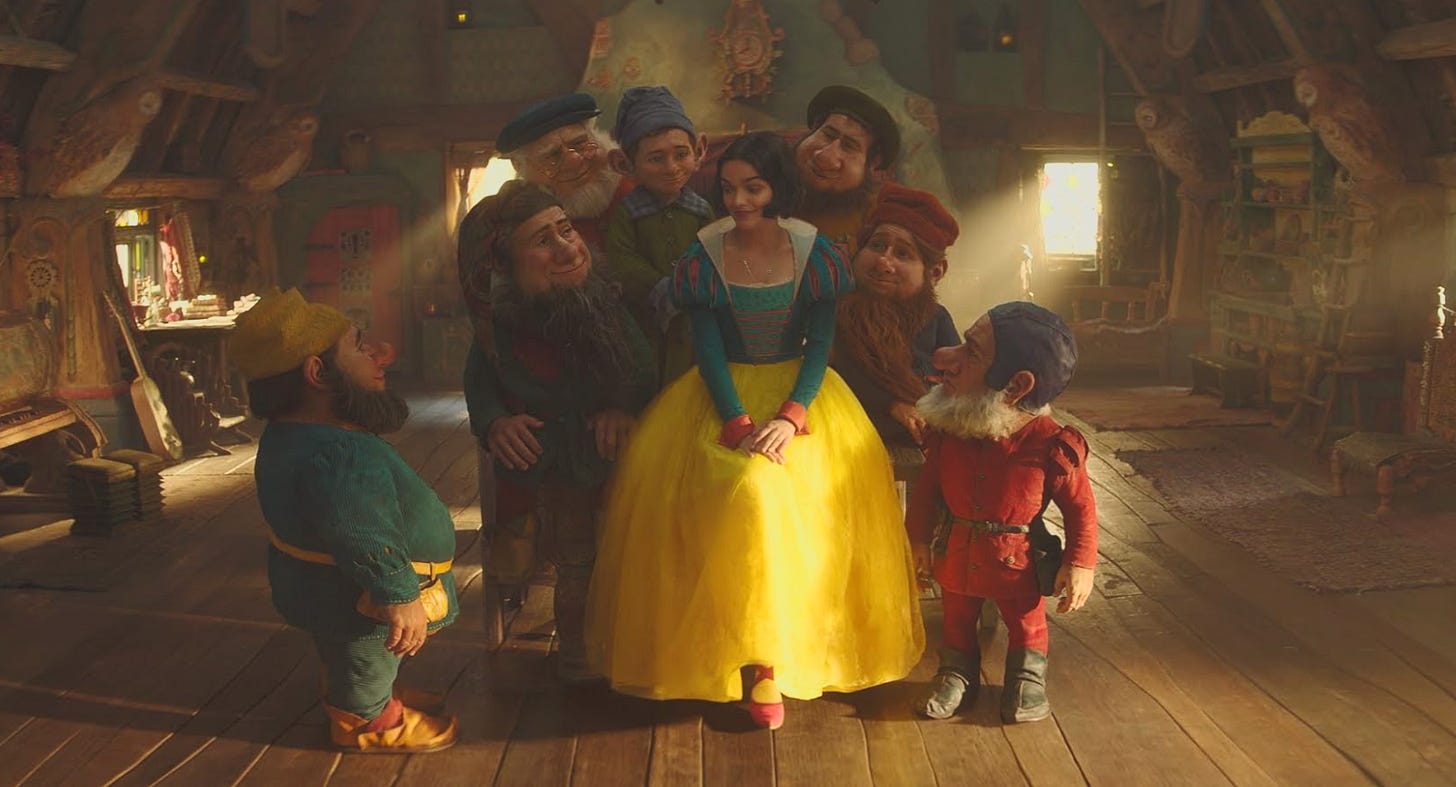
I feel like Snow White would have been the one movie best left in the animation realm. No matter what they did, I don't think they could make the dwarfs look right as characters in live action.
A great read, Eirik! Perhaps I do have to watch this one after all…